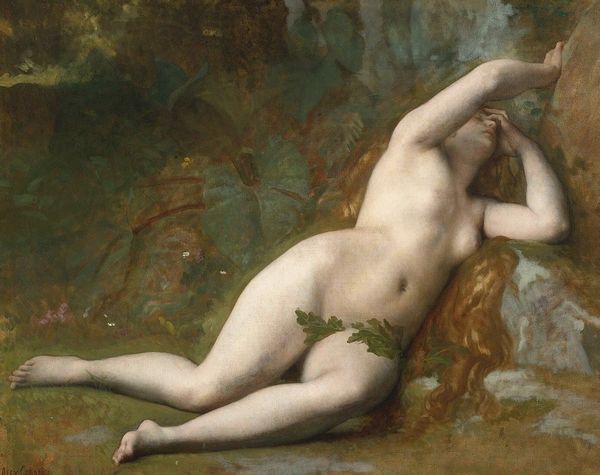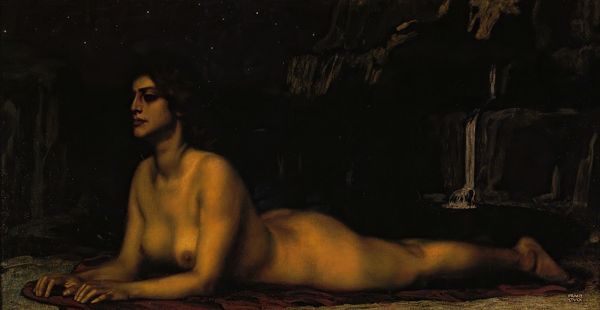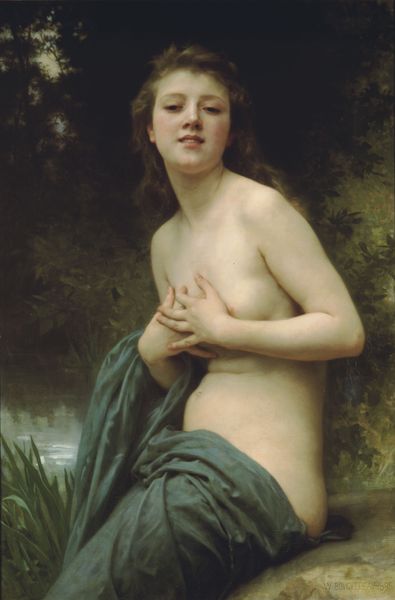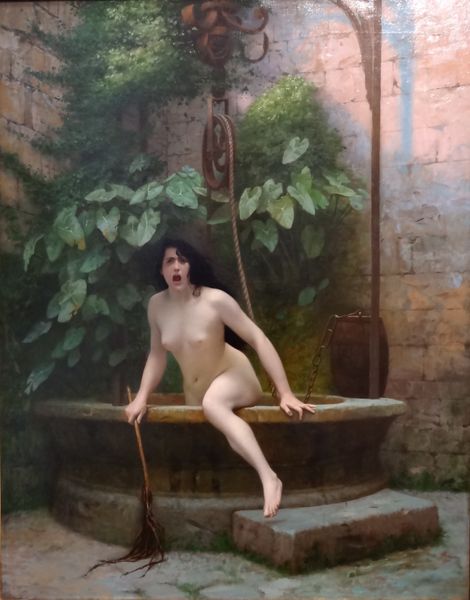
painting, oil-paint, photography
#
character pose
#
green hue
#
painting
#
oil-paint
#
blurry
#
figuration
#
photography
#
female-nude
#
underpainting
#
romanticism
#
academic-art
#
lady
#
nude
Dimensions: 138 x 122 cm
Copyright: Public domain
Editor: So here we have Francesco Hayez's "Susanna at her Bath," painted in 1850. It's oil on canvas. The pose is compelling; the figure’s gaze seems…uneasy. I'm curious, what elements in the work do you find particularly noteworthy? Curator: Notice how the labor is divided here. Hayez likely employed assistants for tasks like grinding pigments, preparing the canvas, and even underpainting. The very material of the canvas, the quality of the oil paint—these were commodities in a specific market. This division is central, a production chain impacting the final form, even the perceived emotion you mentioned. Editor: So the creation isn't purely Hayez's individual expression, but also shaped by these material and economic factors? The painting almost romanticizes this idyllic scene. Curator: Exactly. Think about the societal implications of this "romantic" scene. Who has access to leisure and bathing? The pale skin itself becomes a marker of status, attainable through a life removed from manual labor, revealing class distinctions reinforced through material realities. What about the fabric draped around Susanna, suggestive and luxurious – where and how was that textile manufactured and acquired? Editor: That's fascinating, I hadn’t considered the textile’s implications and all of the work of anonymous artisans. Curator: It forces us to consider the complete picture – not just the aesthetic surface, but the conditions and resources which make the aesthetic possible. What appear as individualistic choices about brushwork or composition become embedded within systems of value and power. Editor: This gives me so much to consider, going beyond the artist's individual talent to examining societal structures through the art itself. Thanks! Curator: It shifts the conversation from an artwork’s inherent beauty to how it participates in and reflects a material world.
Comments
No comments
Be the first to comment and join the conversation on the ultimate creative platform.













